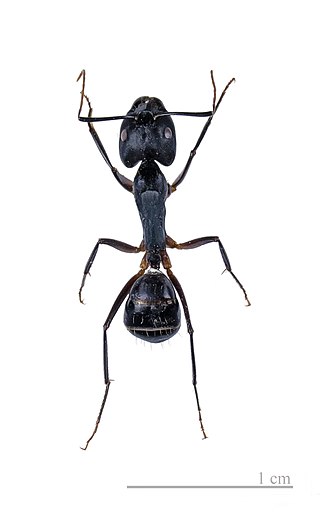
The Formicinae are a subfamily within the Formicidae containing ants of moderate evolutionary development.
Autothysis or suicidal altruism is the process where an animal destroys itself via an internal rupturing or explosion of an organ which ruptures the skin. The term was proposed by Ulrich Maschwitz and Eleonore Maschwitz in 1974 to describe the defensive mechanism of Colobopsis saundersi, a species of ant. It is caused by a contraction of muscles around a large gland that leads to the breaking of the gland wall. Some termites release a sticky secretion by rupturing a gland near the skin of their neck, producing a tar effect in defense against ants.

Carpenter ants are large ants indigenous to many forested parts of the world.
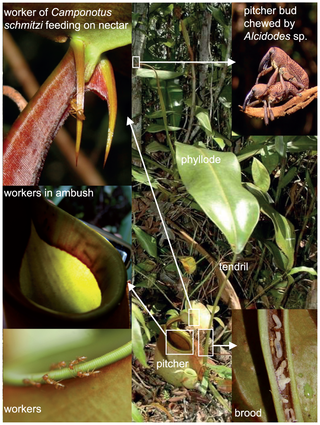
Colobopsis schmitzi, synonym Camponotus schmitzi, is a species of ant native to Borneo, which is commonly known as the diving ant, swimming ant or pitcher-plant ant, due to their habit of diving into the digestive fluids of their plant host Nepenthes bicalcarata. They are endemic to the island of Borneo.

Globitermes sulphureus is a species of termite that is very common in central and southern Vietnam and also present in other areas of South East Asia, including Cambodia, Thailand, and Peninsular Malaysia. They live in nests made of earth that can be up to 1.5 m tall and can contain tens of thousands of individuals. Between five and 10 per cent of the population are soldier termites which can be recognised by their yellow abdomen and two large, curved mandibles. The termites use autothysis as a defense mechanism.
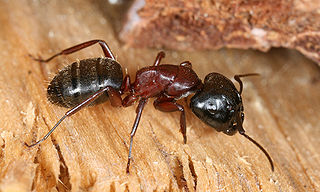
Camponotini is a tribe containing 2 extinct ant genera and 8 extant ant genera, including Camponotus.
Colobopsis anderseni, synonym Camponotus anderseni, is a species of mangrove ant found in northern Australia.

Attavyros or Atavyros (Ατάβυρος) or Atabyron is the highest mountain on the island of Rhodes in the Dodecanese in Greece. It rises to a height of 1,215 m. It lies to the south of the village of Embonas.

Colobopsis abdita is a species of carpenter ant endemic to Guatemala. It was described by Auguste Forel in 1899.
Colobopsis ceylonica is a species of formicine ant. It is found from Sri Lanka.
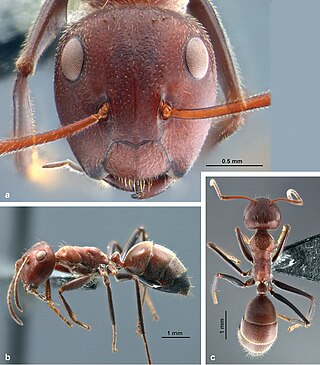
Colobopsis explodens is a species of ant which is found in Southeast Asia. Like some other species in its genus, it is noted for a rare combat mechanism of workers exploding in self-defense, smothering the enemy with toxic and often deadly secretion. This suicidal defensive adaptation also occurs among some species of termites: it is termed autothysis, and as ants and termites are members of practically unrelated insect orders, it comprises a dramatic example of convergent evolution.
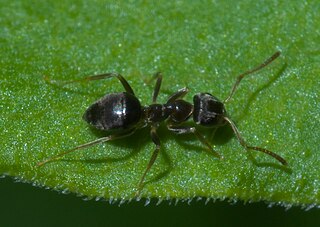
Lasiini is a tribe of ants in the family Formicidae. There are about 10 genera and more than 450 described species in Lasiini.

Formica ravida is a species of ant in the family Formicidae.

Formica obscuriventris is a species of ant in the family Formicidae.

Formica neogagates is a species of ant in the family Formicidae. Found throughout North America and Canada, introduced in Europe, France.

Colobopsis is a genus of ant in the subfamily Formicinae. This genus was first described in 1861 by Mayr and contains 95 species. The type species is Colobopsis truncata.

Camponotus laevigatus, formerly Camponotus quercicola, is a species of carpenter ant native to California. It nests in the dead branches of oaks such as Quercus wislizeni.

Camponotus yogi is a species of carpenter ant native to California and Baja California.















